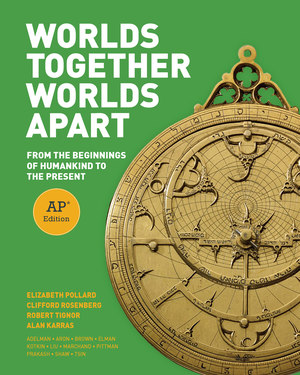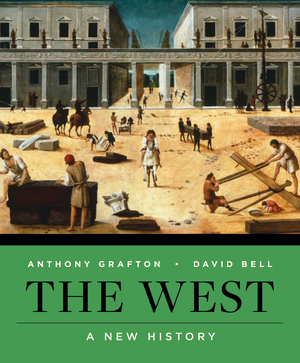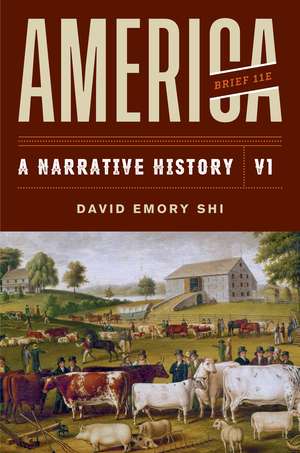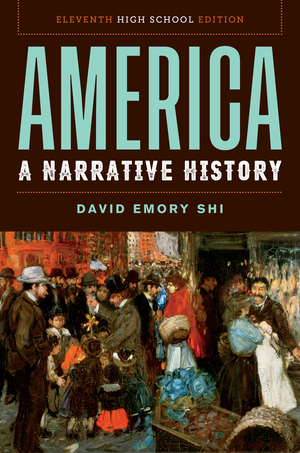Test Bank for Worlds Together, Worlds Apart From the Beginnings of Humankind to the Present AP® Edition by Elizabeth Pollard
$45.00 & Free Shipping
ISBN: 9780393616781
ISBN: 9780393616699
© W. W. Norton & Company, Inc
Free shipping on orders over $50!
- Satisfaction Guaranteed
- No Hassle Refunds
- Secure Payments
Description
Front Matter
Title Page
Copyright
Contents in Brief
Contents
Current Trends in World History
Analyzing Global Developments
Going to the Source
Maps
Preface
About the Authors
Before You Read This Chapter
Chapter 1 – Becoming Human
Creation Narratives Hominids to Modern Humans
The Life of Early Homo Sapiens
Agricultural Revolution: Food Production and Social Change
Conclusion
Chapter 2 – Rivers, Cities, and First States, 3500 – 2000 BCE
Settlement and Pastoralism
Between the Tigris and Euphrates Rivers: Mesopotamia
“The Gift of the Nile”: Egypt
The Indus River Valley: A Parallel Culture
The Yellow and Yangzi River Basins: East Asia
Life Outside the River Basins
Conclusion
Chapter 3 – Nomads, Territorial States, and Microsocieties,�2000–1200 BCE
Nomadic Movement and the Emergence of Territorial States
The Territorial State in Egypt
Territorial States in Southwest Asia
Nomads and the Indus River Valley
The Shang Territorial State in East Asia (1600–1045 BCE)
Microsocieties in the South Pacific and in the Aegean
Conclusion
Chapter 4 – First Empires and Common Cultures in Afro-Eurasia, 1250–325 BCE
Forces of Upheaval and the Rise of Early Empires
Empire in Southwest Asia: The Neo-Assyrian and Persian Empires
Imperial Fringes in Western Afro-Eurasia
Foundations of Vedic Culture in South Asia (1500–600 BCE)
The Early Zhou Empire in East Asia (1045–771 BCE)
Conclusion
Chapter 5 – Worlds Turned Inside Out, 1000–350 BCE
An “Axial Age”
Eastern Zhou China
The New Worlds of South Asia
The Mediterranean World
Common Cultures in the Americas and Sub-Saharan Africa
Conclusion
Chapter 6 – Shrinking the Afro-Eurasian World, 350–100 BCE
Alexander and the Emergence of a Hellenistic World
Converging Influences in Central and South Asia
The Transformation of Buddhism
The Formation of the Silk Roads
Conclusion
Chapter 7 – Han Dynasty China and Imperial Rome, 300 BCE–300 CE
Globalizing Empires: The Han Dynasty and Imperial Rome
The Roman Empire
Conclusion
Chapter 8 – The Rise of Universal Religions, 300–600 CE
Religious Change and Empire in Western Afro-Eurasia
The Silk Roads
Political and Religious Change in South Asia
Political and Religious Change in East Asia
Faith and Cultures in the Worlds Apart
Conclusion
Chapter 9 – New Empires and Common Cultures, 600–1000 CE
The Origins and Spread of Islam
The Tang State
The Emergence of European Christendom
Conclusion
Chapter 10 – Becoming “The World”, 1000–1300 CE
Development of Maritime Trade
The Islamic World in a Time of Political Fragmentation
India as a Cultural Mosaic
Song China: Insiders versus Outsiders
Christian Europe
Worlds Coming Together: Sub-Saharan Africa and the Americas
The Mongol Transformation of Afro-Eurasia
Conclusion
Chapter 11 – Crises and Recovery in Afro-Eurasia, 1300–1500
Collapse and Consolidation
The Islamic Heartland
Western Christendom
Ming China
Conclusion
Chapter 12 – Contact, Commerce, and Colonization, 1450–1600
The Old Trade and the New
The Atlantic World
The Transformation of Europe
Prosperity in Asia
Conclusion
Chapter 13 – Worlds Entangled, 1600–1750
Economic and Political Effects of Global Commerce
Exchanges and Expansions in North America
The Plantation Complex in the Caribbean
The Slave Trade and Africa
Asia in the Seventeenth and Eighteenth Centuries
Transformations in Europe
Conclusion
Chapter 14 – Cultures of Splendor and Power, 1500–1780
Trade and Culture
Culture in the Islamic World
Culture and Politics in East Asia
African Cultural Flourishing
The Enlightenment in Europe
Creating Hybrid Cultures in the Americas
The Influence of European Culture in Oceania
Conclusion
Chapter 15 – Reordering the World, 1750–1850
Revolutionary Transformations and New Languages of Freedom
Political Reorderings
Change and Trade in Africa
Economic Reordering
Persistence and Change in Afro-Eurasia
Conclusion
Chapter 16 – Alternative Visions of the Nineteenth Century
Reactions to Social and Political Change
Prophecy and Revitalization in the Islamic World and Africa
Prophecy and Rebellion in China
Socialists and Radicals in Europe
Insurgencies against Colonizing and Centralizing States
Conclusion
Chapter 17 – Nations and Empires, 1850–1914
Consolidating Nations and Constructing Empires
Expansion and Nation Building in the Americas
Consolidation of Nation-States in Europe
Industry, Science, and Technology
Global Expansionism and an Age of Imperialism
Pressures of Expansion in Japan, Russia, and China
Conclusion
Chapter 18 – An Unsettled World, 1890–1914
Progress, Upheaval, and Movement
Discontent with Imperialism
Worldwide Insecurities
Cultural Modernism
Rethinking Race and Reimagining Nations
Conclusion
Chapter 19 – Of Masses and Visions of the Modern, 1910–1939
The Quest for the Modern
The Great War
Mass Society: Culture, Production, and Consumption
Mass Politics: Competing Visions for Building Modern States
Conclusion
Chapter 20- The Three-World Order, 1940–1975
World War II and Its Aftermath
The Beginning of the Cold War
Decolonization
Three Worlds
Tensions Within the Three Worlds
Conclusion
Chapter 21 – Globalization, 1970–2000
Removing Obstacles to Globalization
Unleashing Globalization
Characteristics of the New Global Order
Citizenship in the Global World
Conclusion
Chapter 22 – 2001–The Present
Global Challenges
The United States, the European Union, and Japan
China, India, and Russia
The Middle East, Africa, and Latin America
Further Readings
Glossary
Credits
Index





